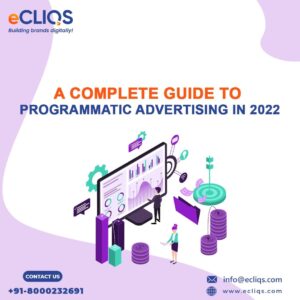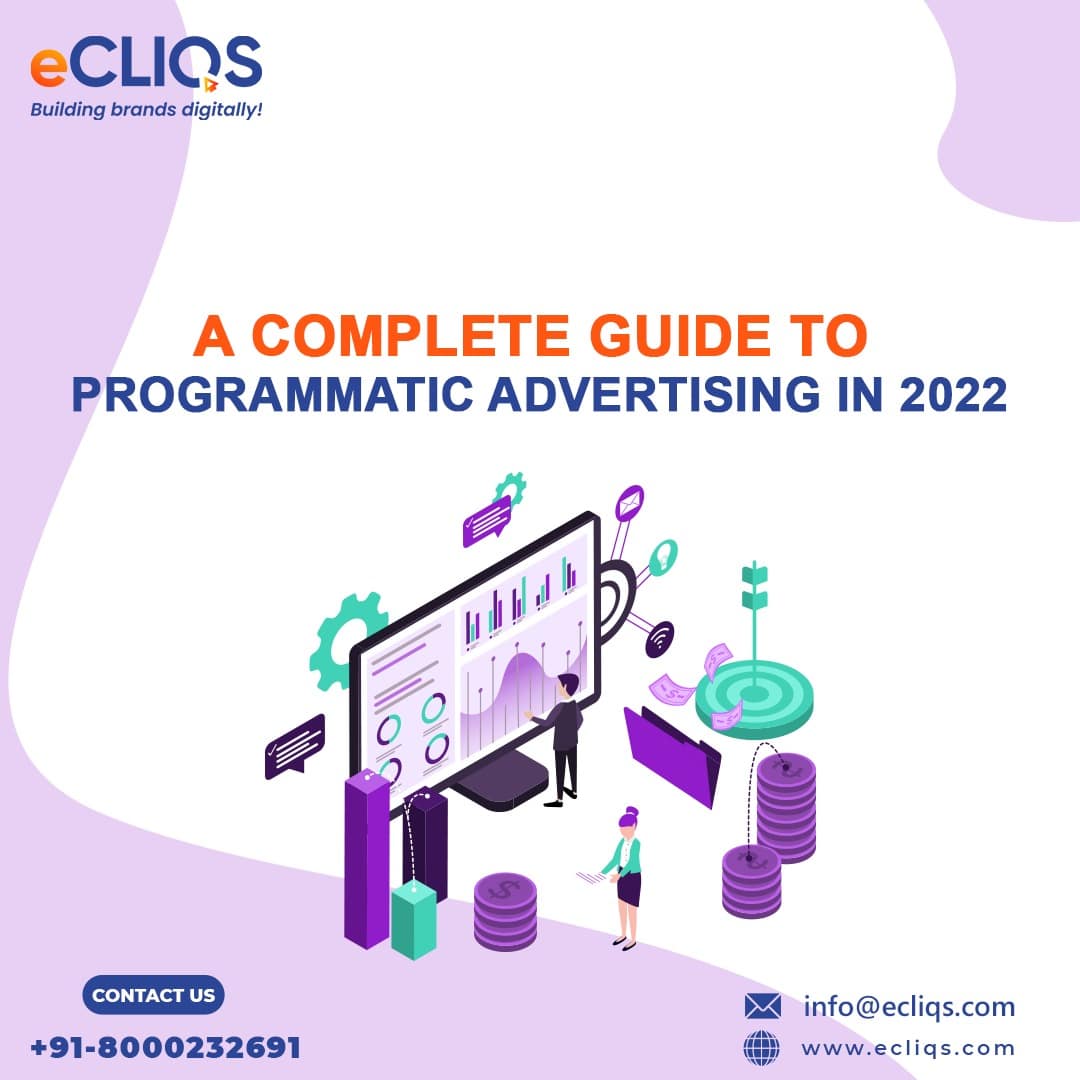Influencer Marketing : A Must Have For Fashion Business
When compared to traditional advertising mediums like TV and magazines, fashion influencer marketing brings the runway to the consumer. Brands no longer need supermodels to promote their products; ordinary people can be the faces of effective social media campaigns.
The fashion business is changing the way it interacts with its clients. Now more than ever, we look to the real-life figures we follow on social media for motivation.
If you’re a fashion company looking to promote your items through influencer marketing, this is the perfect starting point for you.
What is fashion influencer marketing?
The use of people who are popular on social media for advertising has recently become the go to marketing strategy. Influencer Marketing is offering a fresh channel of communication between brands and consumers. Collaborations between influencers and the fashion industry’s quick fashion and high fashion labels are becoming increasingly common.
Having influential people (those with large online followings on social media platforms like YouTube, Instagram, and more) talk about your company is a great approach to get people talking. Often, all it takes is a single post to skyrocket your brand’s internet fame.
In an era where hundreds of millions of people use social media every day, influencer marketing is a great way to swiftly increase brand recognition and credibility. In contrast, each month Vogue magazine is read by 22.5 million people around the world(source: condenast).

Creative Strategies for Fashion Influencer Marketing
Depending on your brand’s needs and long-term objectives, you can choose from a variety of collaboration strategies with influencers. If you put some thought and originality into your marketing, you may make it truly stand out. Gains in popularity, interest, and sales for your business are the result of this.
Here are a few ideas:
- Product promotion: It is normal practice to provide fashion influencers a discount or free merchandise as part of a marketing effort. Then they create different combos to display your clothes and accessories on their blogs, social media, tales, etc.
- Promote sales with affiliate links: Have social media influencers promote your upcoming sale by posting about the deals and highlighting some of their favourite products. Motivating influencers to bring new clients to your brand by offering them a cut of the profits made through their affiliate links.
- Exclusive discount codes: Providing exclusive promo coupons to your most influential customers is a terrific strategy to boost sales and figure out who is sending the most people to your site.
- Have a social media takeover: Complete social media takeovers are a great alternative to the standard sponsored post. An influencer, for instance, may spend an entire day posting as your brand on Instagram. Provide the influencer with access to your social media accounts so they may post to your feed, Instagram Stories, and Instagram Reels to attract their followers.
Tips for a successful fashion influencer marketing campaign
Successful influencer marketing needs extensive preparation and analysis. Take into account these guidelines to ensure the success of your fashion influencer marketing strategy.:
Establish your goals for the partnership
Before going in, identify the goals for your influencer campaign. Why do you want to collaborate with a style influencer? Is your goal to have more people talk about your brand, increase your social media following, or make more money?
If you know where you want to go, you’ll also know what indicators of influencer relationship success to look for. It’s important to track the success of your campaigns to determine whether influencers are worth collaborating with again.
Find out what kind of campaign you want to run
At the end of the day, you need to think about what kind of marketing will assist you succeed. Do you believe a sponsored social media post will provide the best outcomes? Or, perhaps it would be more fruitful to run a contest or provide a special coupon code.
Find out what methods of influencer marketing work best for your brand by putting them through their paces. The idea is to constantly refine your marketing plan based on what you learn from your tests.
If you want your campaign to succeed, you need to pick the ideal influencers to work with
If you’re a company, you should constantly seek out influencers who have access to the kind of customers you’re trying to attract. A campaign won’t be successful if an influencer’s current followers aren’t interested in purchasing your goods. Don’t pick someone simply because they have a lot of fans. Influencers with a lesser follower count can still make for effective cooperation if they have a dedicated, engaged audience.
The importance of fairness and inclusion in your influencer partnership choices cannot be overstated. Your brand should use influencers from a wide range of demographics and physical attributes in every marketing effort to create authentic connections with consumers.
Wrapping up
In the past, fashion companies relied on celebrities to promote their wares, but now they turn to bloggers for more genuine product buzz. The use of influencers in marketing has increased brand awareness and sales, allowing businesses to generate a greater return on investment.
As a form of advertising, influencer promotion is here to stay. Get the ball rolling today if you want your brand to be talked about and recommended.
References
- https://www.unboxsocial.com/blog/influencer-marketing-for-fashion-and-lifestyle/
- https://www.affable.ai/blog/why-a-fashion-brand-must-use-influencer-marketing
- https://www.lexiconn.in/blog/content-writing/influencer-marketing-fashion-lifestyle-brands/
- https://thesocialshepherd.com/blog/social-media-strategy-fashion-brands
- https://www.condenast.com/brands/vogue
How Animated Videos are Created?
Even while everyone wants to develop animations, not everyone has the skills necessary to make them look like they were created by a pro.
You want your animated video to appear beautiful whether it’s for a content marketing campaign, a classroom assignment, an online instructional, or an e-learning course.
We compiled this blog to serve as a resource for anyone interested in developing an animated video that is both effective and polished. Here are some suggestions for improving your video production process.
Steps to create an animated video

Step 1: Plan ahead and prepare your content
The planning phase is one of the most crucial but often overlooked parts of making a video. The difference between mediocre and successful animated videos is a solid strategy.
Try to keep in mind your target demographic and your ultimate objectives while you plot out your strategy.
The first is, “Who exactly am I trying to reach?” Knowing your target demographic is essential for reaching them effectively. If you want to make an awesome animated video, you need to think about what your viewers want to see and what will get them to take action. Who are these people watching? So what makes you think they’d want to watch your video? I don’t see the point. Before you begin your creative process, ask yourself these questions.
The second thing you should think about when planning is, “What do I want to achieve?” Try understanding the purpose of your video? Is there something specific you’d like your readers to grasp, take action on, or become cognizant of? Make a list of these objectives, and write or edit with them in mind.
Step 2: Write your video script
Now that you know who you’re doing the video for and what you want to achieve, you can move on to the next stage.
Next, you should put together a script for your video. Writing the script can be far more difficult than creating the actual animation for some people.
When penning your script, keep in mind these four guidelines:
- Use first-person pronouns and a conversational tone when writing to your target demographic.
- According to a study, 20% of people will click away from your animated video inside the first 10 seconds(source: stadamedia). To that end, make sure your writing is memorable, interesting, and concise.
- Ensure that every word is scripted. Stay alert and plan ahead. With this method, you can save time in the editing process and have more finished products at the end.
- Wrap up your video animation script by inviting the audience to take the next logical step.
Step 3: The next step is to draw up a storyboard for your animated video.
Your script can be visually elaborated upon with a storyboard. A script is written text, while a storyboard complements the narrative with visual elements. You may have a good idea of how your animated video will turn out before investing a lot of time and energy into the process by drawing out a storyboard.
First, you should determine the most important parts of your animation. Include the relevant script segment in each scene, and then draw thumbnails in a rectangle adjacent to it to show how the scene will look in your film. Simple sketches will do just fine; there’s no need to be a graphic artist.
Storyboarding is the process of outlining your story for production. You need not provide exhaustive detail. Make sure it flows well with your story and is easily digestible.
For collaborative video projects, a storyboard is invaluable. It’s a great way to get people’s opinions on your video concept before you even start making it. You’ll quickly learn that big revisions to a finished animated video, say in response to unexpected criticism, could necessitate scrapping or redoing significant portions of the project. A storyboard, while time-consuming to produce, could end up saving you a lot of time in the long run.
Step 4: Animate your story!
Now that you have everything you need, you can use an animated movie maker to turn your ideas into polished video material, complete with animations.
Styling is important in any animated video. You should choose a theme that goes well with your brand and your logo. Choose colours that will blend well with your website. Give proper movements to props and characters so that they appear real.
Find an animation style you like and stay with it. A more engaging appearance is often displayed when there is a constant style.
Step 5: Add voice over and sound effects
A voice over makes it easier for the audience to understand what they are seeing in the video. It helps clear their doubts that occur while watching the video. Sound effects make it engaging. The right sound effect at the right time gives life to the video. So make sure you include an easy voice over with the right sound effects to make your video more engaging.
A few final words
Animated videos help you convey your message in an easy way. It’s easy for people to understand your point if it is done using an animated video. At e-Cliqs, we create high quality professional looking animated videos for our clients so that they can reach the maximum target audience and increase their brand awareness. Click here to begin.
A Complete Guide to Programmatic Advertising in 2022
Many people who work in digital marketing are still unsure of what programmatic advertising actually entails. Programmatic ad buying is complex since it combines data science, automation, and machine learning. It is easy to get lost in the sea of acronyms and buzzwords that surrounds programmatic marketing and think that everyone involved is speaking a foreign language.
There is a lot of misinformation floating around about what programmatic advertising actually is and why your company should consider using it.
What Is Programmatic Advertising?
Automatic buying and selling of online advertising space is known as programmatic advertising.
In the beginning of the era of online advertising, we handled digital advertising transactions in the same way as buying print advertising. Advertisers would pay a premium to have their advertising displayed on a popular website, and publishers would be willing to sell that space for a price.
There was a lot of waste in the system. Ad space management was a frequent source of contention between buyers and sellers. It was challenging to execute successful campaigns since there were so few ways to narrowly focus ads, track their effectiveness, and analyse their return on investment. A lot of decisions were taken without proper evidence or research. And because we had to do everything by hand, it took a long time.
In programmatic advertising, data-driven software negotiates the purchase and placement of digital adverts in a matter of microseconds. It has broad applicability in terms of distribution methods and formats.
The technology integrates marketing automation and machine learning to satisfy the requirements of both advertisers and publishers. Ads can be delivered more precisely and at a larger scale by utilising data from the site itself and cutting-edge targeting techniques. The end effect is increased profitability for both publishers and advertising.

How Programmatic Advertising Works?
Programmatic advertising is complex, requiring a wide variety of tools and services that can be combined as needed. The foundation of a programmatic advertising ecosystem consists of four main parts. Specifically, a data management platform (DMP), an ad exchange, a demand side platform (DSP), and a supply side platform (SSP). Each component works together to provide efficient trading between publishers and advertising.
Demand Side Platforms (DSP)
A DSP lets businesses use automated ad exchanges to purchase ad space from media companies when it becomes available in digital format. Users can narrow their search for an audience based on demographic information such as age, gender, geography, and internet activity, as well as other factors. Ad inventory and audience targeting preferences are configured by the advertiser in the DSP. Once these settings have been set, the platform will actively seek out opportunities in the ad exchange or network.
Supply Side Platforms (SSP)
Publishers use SSPs to manage their inventory of available ad space, whereas advertisers use DSPs to manage the purchasing of advertising space. To increase the publisher’s visibility to advertisers, an SSP can integrate with several different ad networks. By using an SSP, a publisher may better manage their available ad space. For instance, requiring particular formats or purchasers and establishing minimum pricing for various imprint sizes (in the case of private marketplaces).
Data Management Platforms (DMP)
Ad inventory and ad space must be properly matched for programmatic to be successful. To solve this problem, you need a data management platform (DMP).
DMPs are decentralised platforms that collect, manage, and analyse data from various sources in one convenient location. It creates in-depth profiles of users, which programmatic algorithms then utilise to serve out the most pertinent ads to site visitors. Using a DMP, both advertisers and publishers can fine-tune their targeting, provide insightful insights, and construct engaged lookalike audiences.
Ad Exchanges
Ad exchanges reside in the midst of the programmatic ecosystem. It’s where DSPs and SSPs come together to settle on a price and trade stock, similar to the action on the trading floor of a stock exchange.
Often people mistake up ad exchanges with ad networks. An ad network is a marketplace where inventory from various publishers inside the network is pooled and sold. An ad exchange, on the other hand, is a marketplace that facilitates transactions between various ad networks. In the event of direct sales, the marketplace could be a closed one.
Briefly, these four constituents function as follows:
- To make their available ad inventory accessible through an ad exchange, publishers employ SSPs.
- Information (about the publisher’s site, the user, and the ad space) is transmitted to a DMP through a “pixel.”
- Meanwhile, a DSP is utilised by the advertiser to establish the aforementioned ad targeting and budget parameters.
- By communicating with the DMP, the DSP may locate the ad exchange inventory that is most suitable for the advertiser. Then, it makes a demand.
- For each impression opportunity, the ad exchange employs a set of algorithms to determine which ads to show.
- Advertisements are delivered to the SSP so that they can be shown to visitors of the publisher’s site.
Programmatic Buying Methods
Programmatic direct, real-time bidding (RTB), and private marketplaces(PMP) are the three primary formats via which advertisers can purchase inventory from publishers.
Programmatic Direct
Words like “programmatic guaranteed,” “preferred deal,” “automated guaranteed,” and “programmatic reserved” may be familiar to you. Every one of these methods can be classified as “programmatic direct” (but vary slightly in how they are executed).
During a programmatic direct deal, the publisher guarantees a certain amount of impressions for a set payment. Full-page takeover advertising and native content on popular sites are common examples of such premium formats.
The process is very similar to that of traditional media buys, with both sides sitting down to discuss terms. However, automated systems handle the actual trading and order-insertion. With programmatic direct, media companies may set their own rates for premium inventory. Advertisers, meanwhile, can purchase guaranteed ad impressions through a transparent direct-to-buyer model, albeit with reduced precision in their ability to target certain demographics.
Real-Time Bidding (RTB)
RTB, or real-time bidding, is a method of purchasing and selling advertisements that was initially developed to assist publishers in selling unsold inventory. All purchases are finalised in less time than it takes to load a webpage (around 100 milliseconds).
Instead of working with a single publisher, an RTB approach allows any buyer to bid on the inventory in a public ad exchange. This enables advertisers to buy individual ad impressions every time a user visits a publisher’s site. Planning an effective advertising campaign can be more challenging when there is no reserved inventory or guaranteed impression quantity.
Each participant in an RTB system can specify their ideal target demographic, maximum acceptable bid amount, ad format, and so on. RTB, on the other hand, hides less information about the advertisers and publishers who are paired together than other buy methods.
Private Marketplace (PMP)
PMP is a closed auction model that is only open to those who have been invited to participate. As a result, publishers can now provide premium inventory to an elite group of advertisers. As a result, publishers can have greater discretion over which advertisers are allowed on their sites. The auction process continues with a predetermined floor price.
When compared to RTB, PMP auctions are more transparent because buyers and sellers are not kept in the dark about what goods is being purchased. Buyers may also have the option of bidding on guaranteed impressions, depending on the auction format, audience modelling, KPI analysis, etc. based on statistical analysis of similar groups of people.
How to Do Programmatic Advertising
Planning, technology, data, and expertise are the four pillars of effective programmatic advertising.
Planning
Knowing exactly what you want to accomplish before beginning any programmed endeavour is crucial. Don’t enter the arena before you’ve thought out your motivations. To begin, it is necessary to compile and analyse data from a variety of sources to establish what sort of advertising is required.
Establish both the near- and long-term objectives of your company’s marketing efforts. Primary and secondary key performance indicators should be established early on to prevent veering off course.
Technology
Within the realm of programming, there exists a plethora of various environments. While some companies provide their clients with completely managed services, others provide advertisers the option to do their own programmatic buying.
When assessing programmatic technology, it is important to keep in mind the following:
- Is it possible to reach your desired audience through the channels (such as a demand-side platform (DSP), data-management platform (DMP), or ad exchange)?
- For what services does the platform charge? Will you be charging by the thousand impressions (CPM) or per click (CPC)? Do you charge for anything extra, or is it included?
- Which kinds of shopping carts will you have to accommodate? Is this a direct result of some sort of programming? A/B testing, PMP, etc. Will your platform be able to integrate with the publisher’s infrastructure for direct ad purchases?
- To what extent will a DSP provider be able to connect to your data warehouse?
- Is a cross-channel approach possible with the platforms you’re thinking about?
- Which would you prefer, an agency-style DSP or an in-house system?
Do your homework to obtain the best services and choices for your company’s requirements.
Data
Programmatic advertising relies on high-quality data just as other forms of marketing automation. It’s the backbone of the advertising industry, enabling precise targeting, audience modelling, KPI tracking, and more.
However, non-human traffic sources (such as bots) strew the programming landscape and taint data quality. You should check that your DSP uses a data verification provider and has adopted anti-bot procedures like Ads.txt. Consider probabilistic monitoring and contextual targeting as alternatives to cookies in light of evolving privacy laws.
Expertise
No one can achieve success in programming by relying solely on algorithms. Human thought is required for the multitude of logistical, strategic, and artistic considerations that must be made.
Combine the time and effort savings brought forth by automation with the creativity and foresight of human workers. Only by carefully analysing the data can you maximise the benefits of programming. To effectively design, manage, and optimise your campaign, you need the help of a team of marketing experts and data scientists.
Is Programmatic Advertising Worth It?
When done correctly, programmatic advertising may be remarkably productive. One of the main draws for businesses is the possibility of automating media acquisition and tailoring ad distribution to individual viewers. Ad spending can typically be stretched further with programmatic buying than with more conventional methods. Reasonably so, it has grown to absorb more than 93 percent of all UK display advertising dollars(source:insiderintelligence).
According to the 2022 State of Programmatic Advertising, 70% of participants in the 2020 State of Programmatic Advertising poll reported some measure of success from their programmatic efforts. Also, 23% said their programmatic efforts were highly successful in meeting strategic goals. Spending on programmatic advertising in the United Kingdom is rising rapidly and is projected to hit $9.3 billion by the end of 2022(source:statista).
Final words
Even though programmatic advertising is just getting started, it is easy to see how this AI technology will shape the future of online marketing. Both marketers and publishers stand to gain from an automated ad inventory purchasing and selling process. All your advertising efforts will be well worth it if you can get your internet adverts in front of the appropriate people at the right time.





